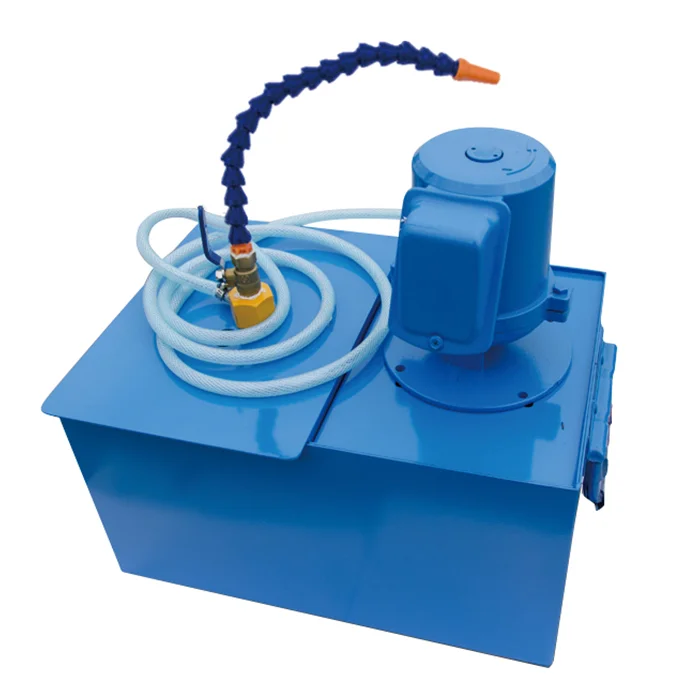Introduction
Coolant systems are essential for any industrial setup that involves heat generation. From automotive engines to heavy-duty machinery, power plants, and CNC machines, coolant systems maintain the thermal balance to avoid overheating, reduce wear and tear, and ensure efficient, long-term operation. As industries strive for energy efficiency and eco-friendliness, coolant systems are rapidly evolving to meet newer challenges with smarter, safer, and more sustainable designs. In the world of industrial operations, machinery generates enormous amounts of heat during prolonged use. To maintain performance and avoid equipment failure, coolant systems are used to regulate temperatures by absorbing and dissipating excess heat. From engine blocks and turbines to injection molding machines and CNC equipment, coolant systems are crucial to reliability, efficiency, and safety.
How Do Coolant Systems Work?
The basic working principle of a coolant system involves heat absorption, transportation, and dissipation. Here’s the process:
- Heat Absorption: The coolant fluid flows around heat-generating components. It absorbs the heat, increasing the coolant’s temperature.
- Heat Transfer: The heated coolant is pumped through pipes to a heat exchanger, radiator, or chiller, where the heat is removed.
- Cooling & Recirculation: Once cooled, the fluid is sent back into the system for another cycle.
Smart systems may adjust flow rates, pressure, and coolant levels in real-time based on operating conditions, making them highly energy-efficient.
Types of Coolant Systems
Closed-Loop Coolant System
- The coolant is recirculated within a sealed system.
- No exposure to external air or contaminants.
- Reduces evaporation, contamination, and maintenance.
- Ideal for industries where cleanliness and precision are key (e.g., electronics, medical devices).
Open-Loop Coolant System
- Pulls coolant (typically water) from an external source like a cooling tower or natural reservoir.
- Coolant is discarded or recycled after heat removal.
- Common in large industrial plants and power generation units.
Air-Cooled Coolant System
- Uses air instead of fluid to remove heat.
- Lower complexity and cost but less effective for high-heat loads.
- Found in smaller machines and outdoor equipment.
Liquid-Cooled System
- Circulates liquid coolant (like water, oil, glycol mix) to carry heat away.
- Superior thermal conductivity.
- Preferred in data centers, automotive, and heavy-duty machinery.
Hybrid Cooling System
- Combines both air and liquid cooling methods.
- Used in high-performance computing, electric vehicles, and variable load applications.
Innovations in Coolant Systems
IoT & Real-Time Monitoring
- Sensors collect data on temperature, pressure, and fluid quality.
- Remote dashboards for alerts, predictive maintenance, and system health reports.
Eco-Friendly Coolants
- Glycol-free, plant-based, or biodegradable fluids reduce ecological impact.
- Especially useful in food processing and pharma industries.
Nanofluid Technology
- Coolants with nano-sized particles (like aluminum oxide, copper) show up to 30% higher thermal conductivity.
- Ideal for microelectronics and energy systems.
Modular Coolant Skids
- Skid-mounted cooling units with plug-and-play design.
- Easy to integrate, scale, and service.
Self-Healing Fluids & AI Diagnostics
- New-age coolants can self-repair minor leaks or neutralize contaminants.
- AI-based systems analyze trends to recommend maintenance before failure occurs.
Applications of Coolant Systems
- Automotive Engines: Prevents overheating and maintains performance in all driving conditions.
- CNC Machining: Cools cutting zones, reduces tool wear, and flushes away debris.
- Power Plants: Cools turbines, generators, and transformers for uninterrupted operation.
- HVAC Systems: Transfers heat in building climate control systems.
- Medical Equipment: Regulates temperatures in MRI machines, lasers, and diagnostic tools.
- Chemical Processing: Maintains stability during exothermic reactions and storage.
- Data Centers: Prevents overheating of server racks and enhances energy efficiency.
Conclusion
Coolant systems are far more than just temperature controllers—they are vital components in safeguarding industrial efficiency, extending equipment life, and supporting precision across various sectors. From powering heavy-duty machines in steel plants to stabilizing sensitive equipment in medical labs, their role is foundational to modern industry. With ongoing advancements like IoT-based monitoring, eco-friendly coolants, and nanotechnology, coolant systems are evolving to become smarter, cleaner, and more energy-efficient. Investing in the right coolant system is not only a technical decision but a strategic move toward sustainability, reliability, and operational excellence.

